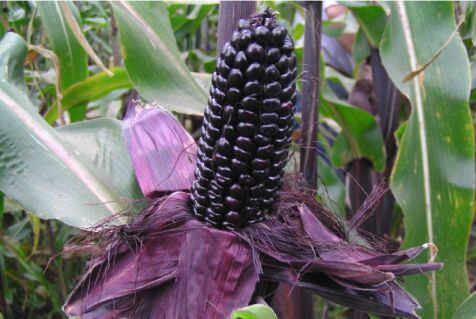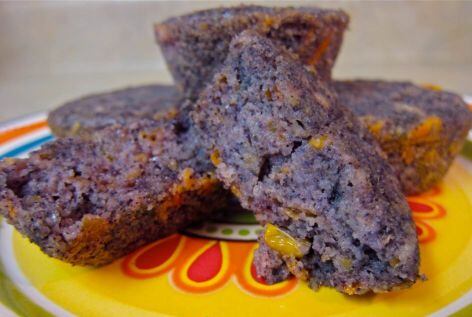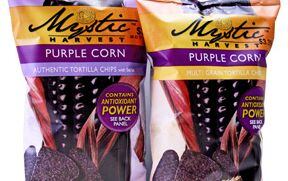And when it comes to anthocyanins, purple corn is king of the crop, according to Minnesota-based Suntava, which is doing a roaring trade in purple corn-based food ingredients, from natural food colors to cornmeal and corn syrup.
Suntava purple corn has an ORAC value (per 100g) of 10,800, whereas blueberries have 4,669

While ORAC scores should not be viewed in isolation - as in vitro measures of antioxidant capacity don’t tell us a great deal about how phytonutrients confer health benefits in vivo - they are a good indicator of the free-radical busting potential of foods.
And purple corn blows pretty much everything else out of the ballpark, says Suntava director of business development Terry Howell.
“Suntava purple corn has an ORAC value (per 100g) of 10,800, whereas blueberries have 4,669. It also has a far higher ORAC score than other corn varieties, 15 – 20% more of the eight essential amino acids found in yellow corn and four times the level of anthocyanins in blue corn.”
New research shows purple corn could have potential vs heart disease, diabetes and colon cancer
However, rat studies have also demonstrated its potential to tackle low-grade inflammation (as evidenced by its positive effects on pro-inflammatory markers); reduce the oxidation of lipids in the blood; and positively impact blood glucose levels.
There is also some exciting new research on purple corn's effects on human colon cancer cells, said Howell, who is promoting Suntava purple corn as ‘nature’s healthiest, highest antioxidant corn’ with ‘twice the antioxidant power of blueberries’.
For example, Dr Monica Giusti, assistant professor of food science at Ohio State University, has conducted research on several anthocyanin-rich extracts on human colon cancer cells grown in the laboratory, and found that purple corn is the most potent, in that it took the least amount of extract (14 micrograms per milliliter of cell growth solution) to cut cell numbers in half, said Howell.
Consumer messaging: Purple foods are good for you

While the average consumer is probably blissfully unaware of the potential health benefits of purple corn, shoppers are starting to buy into the ‘purple foods are healthy foods’ message, said Howell, who contracts with growers in the US to grow non-GMO purple corn unusually high in anthocyanins to Suntava’s specifications.
“Dr. James Joseph, a neuroscientist at the USDA Human Nutrition and Research Center on Aging at Tufts University and co-author of a book called 'The Color Code: A Revolutionary Eating Plan for Optimal Health' said: ‘If I could eat only one color per day, it would be purple’.”
Meanwhile, the ‘ancient grain’ message also resonates with consumers, he said, pointing out that purple corn was widely grown and consumed in South America more than 2,000 years ago, and is still widely cultivated in Peru.
“It was a staple of the ancient Mayan and Aztec empires.”
‘Fantastic’ feedback at Expo West for purple corn syrup

Suntava, which initially focused on bringing natural colors from purple corn to market as a replacement for synthetic dye Red 40, has since expanded into purple corn meal, which is used in everything from tortilla chips to snack bars, sourdough, cereals and cakes.
It is also looking at commercializing a purple corn syrup and concentrated ingredients for the nutraceutical market, says Howell.
“I’ve just been walking the floor at Expo West and had fantastic feedback for the purple corn syrup. It’s got a sweet and tangy taste and works really well in blueberry granola bars, confectionery, beverages, jams and jellies and smoothies.
"It's also non-GMO, which is becoming increasingly important."
While some firms are interested in the novelty factor (purple snacks), others have really homed in on the antioxidant message, says Howell, notably Axium Foods, which recently announced that its multi-grain Mystic Harvest tortilla chips (pictured left) made with Suntava’s purple corn are being carried by Costco’s Midwest Division.
